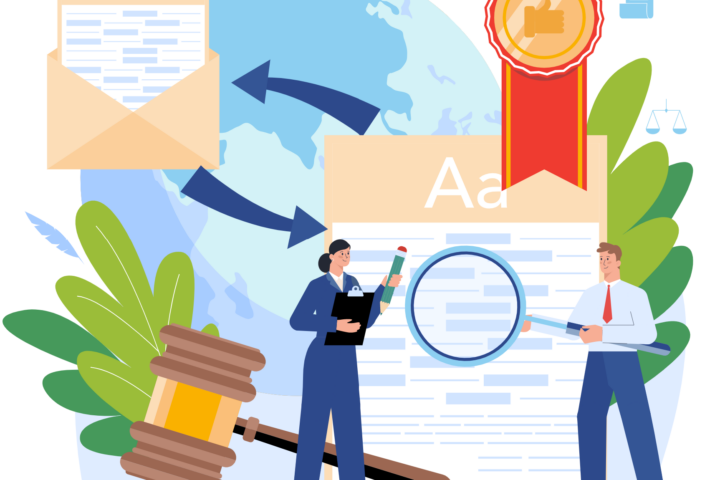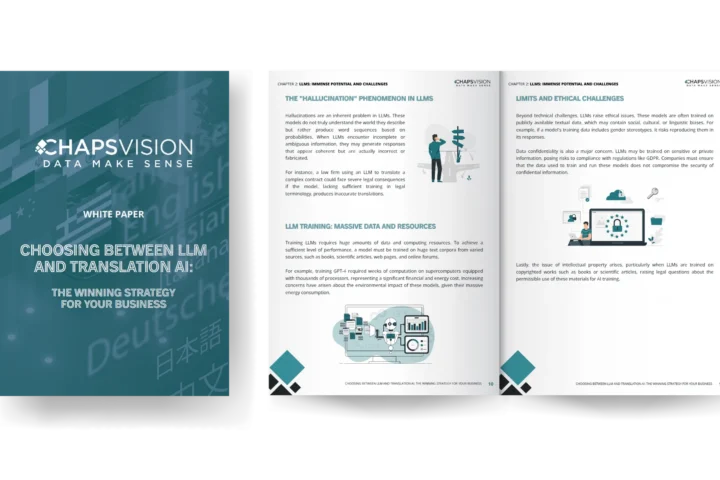SYSTRAN’s solution are used every day by various types of companies across many industries to get the most accurate and secure automatic translations on any type of content – from sensitive documents to websites to mobile apps and much more. We’d like to focus today on how one of our clients – Alvarez & Marsal, a consultancy firm- uses SYSTRAN’s platform to manage eDiscovery projects with the highest efficiency and accuracy.
The processes and tools used in eDiscovery scenarios are, most of the time, quite complex given the large volumes of electronic data produced. Unlike hard-copy evidence, e-documents are a lot more dynamic and contain various metadata that demand the highest translation quality in order to eliminate any claims of spoliation at any time in a litigation case.
Phil Beckett, the firm’s Managing Director, who has recently been named ‘Investigation Digital Forensic Expert of the year’ by Who’s Who Legal is talking to us about how SYSTRAN’s solutions plug into their internal processes to manage their projects end to end.
1) What is the typical workflow when taking on a new eDiscovery project?
PB: We regularly consult with clients to ensure that they employ the most effective and efficient methodologies in an eDiscovery scenario. One of the challenges we often help them overcome is dealing with foreign languages. Ideally, these would all be reviewed by native speakers, but that is not always feasible given time, costs and resources. Therefore we always recommend automated translation of documents, to enable the review to be undertaken in the lawyers’ native language.
Our standard approach is to apply analytics, including language identification across the entire population of documents within a case, thus allowing us to provide a profile of language use to our clients along with recommendations on how to manage foreign language documents.
This is generally customized on a case by case basis to meet the specific requirements of the situation, but generally we collate documents (be it emails, Office documents, PDFs etc) based on their predominant language and define a process for each language, generally sending them en-masse (with client approval) to SYSTRAN to be translated, with the translated text being displayed alongside the native language. We also have standard procedures to allow for ad-hoc documents to be translated as needed.
The way that we apply this they within the overall context of a case is described below, but in essence it is to allow our clients to review and make initial decisions on documents in a consistent manner, irrespective of the language they are written in.
2) Is this basically a triage application where you try and hone in on the most important documents?
PB: However, good the automated translation output, (which is good and getting better), it will never replace a native speaker reading, analyzing and interpreting the native text. They are able to pick up the nuances and meanings that can sometimes become lost in (any sort of) translation.
The goal is to allow clients, in their native language, to gain a credible understanding of the content and meaning of the document so that intelligent decisions can be made about how to treat the document going forward. Therefore, automated translation is an important triage tool, along with other filtering or refinement techniques such as de-duplication, keyword searches and email threading or near duplicate identification. Systran is therefore generally deployed during the initial phases of a project to enable documents to be translated and included in subsequent phases of work.
Our projects are varied and are not all focused around litigation. For example we often perform regulatory exercises and investigations. In these situations, it is often not known at the onset what is required; therefore, the culling of data is based more upon an investigative common sense and the utilization of analytics features such of document categorization or clustering. In this instance, samples of various documents, related to different investigatory routes, are sent for translation to help our teams develop an understanding of the data. The ability to provide our investigators with the option to translate documents on the fly is also a massive benefit in these types of matters.
Regardless of the type of matter, SYSTRAN enables a very efficient solution to enable clients to triage large sets of foreign language documents, ensuring a consistent and coherent approach is followed.
3) Are there key languages or special subject matters that are of greater importance than others?
PB: We serve a wide range of clients from our various facilities around the World, including China, USA, India, the UAE and across Europe. Therefore the range of languages we encounter is very diverse. The common thread though is that in most cases the desire is to translate from a foreign language into English (or German). In many cases, due to the international nature of our clients, there are native speakers who can deal with many of the common global languages – so other languages tend to be in demand. For example a recent matter involved translating a document set with a mix of Swedish and Norwegian languages into English to speedily make these documents reviewable to a Canadian law firm.
In respect of subject domains, we do not really see a common domain that matters more than others, although there tends to be preponderance towards the financial, automotive and extractive industries in our work.
4) Is this translation capability used in corporate litigation, or is it used for some other kind of corporate governance application?
PB: Alvarez and Marsal get instructed on a very wide range of matters, including contentious projects around internal investigations, dispute resolution, insolvency and compliance programs. However, not all of them are contentious in nature – for example performance improvement and valuations. A common thread is that they are document ‘heavy’ and therefore require our skill sets to effectively conduct them. The use of the technology differs in each scenario. As a result, understanding the client requirements and the capabilities of the technology allows us to devise suitable workflows for handling the documents. However, where foreign languages are involved we use SYSTRAN translation technologies to the same effect.

5) Do you do any kind of fine tuning (or specialization) to ensure that translation output is accurate on critical terminology?
PB: We perform sanity checks over the translated documents and utilize team members with language skills to assist in this where possible. As with any technology, there are limitations and learning points so having an open relationship with SYSTRAN allows us to provide feedback which they can act upon and refine the technology.
Where projects relate to niche or highly technical subjects is it key to have subject matter experts to review the translated documents. Again, the key point here is giving feedback to the provider based upon these reviews.
In addition to the above, we also work very collaboratively with our clients to ensure that our processes are both transparent and understood – therefore we also encourage them to assist with the review of translated documents.

6) Were you considering other solutions to do this? What made you pick SYSTRAN as your vendor? Can you mention specific features that made you choose them over other solutions providers?
PB: We have been utilizing translations within projects for a considerable time, historically, this process has been via the use of external providers who receive the documents, translate them and provide translated text to be loaded into our document review tool, Relativity. This solution was often too rigid, seen as being disjointed from the rest of the project and often caused delays. A key reason for using SYSTRAN was the depth of integration with Relativity, which means our clients see it is as one connected, flexible and effective solution – providing them with reassurance and comfort in only having to use one tool. In addition, the speed and accuracy of the translations were impressive when benchmarked against other providers, as well as the simplicity of accurately translating documents with a few mouse clicks.
7) Can you comment on the overall emerging translation needs in the eDiscovery market? Is there a growing need for translation in this type of work?
PB: The need for accurate and efficient translations is definitely growing within the eDiscovery market. At A&M, our global footprint is continuously expanding, meaning we have clients in every continent. This introduces new demands and requirements for an extended ranges of languages. We are consulting more and more with clients whose data contains a mix of various languages and we do not see this need slowing down in the near future. The ability to deal with an ever-growing range of languages in an accurate and efficient manner is vital within the current market and allows us to continue to provide an excellent service to our clients while appreciating the pressures on costs and time.






